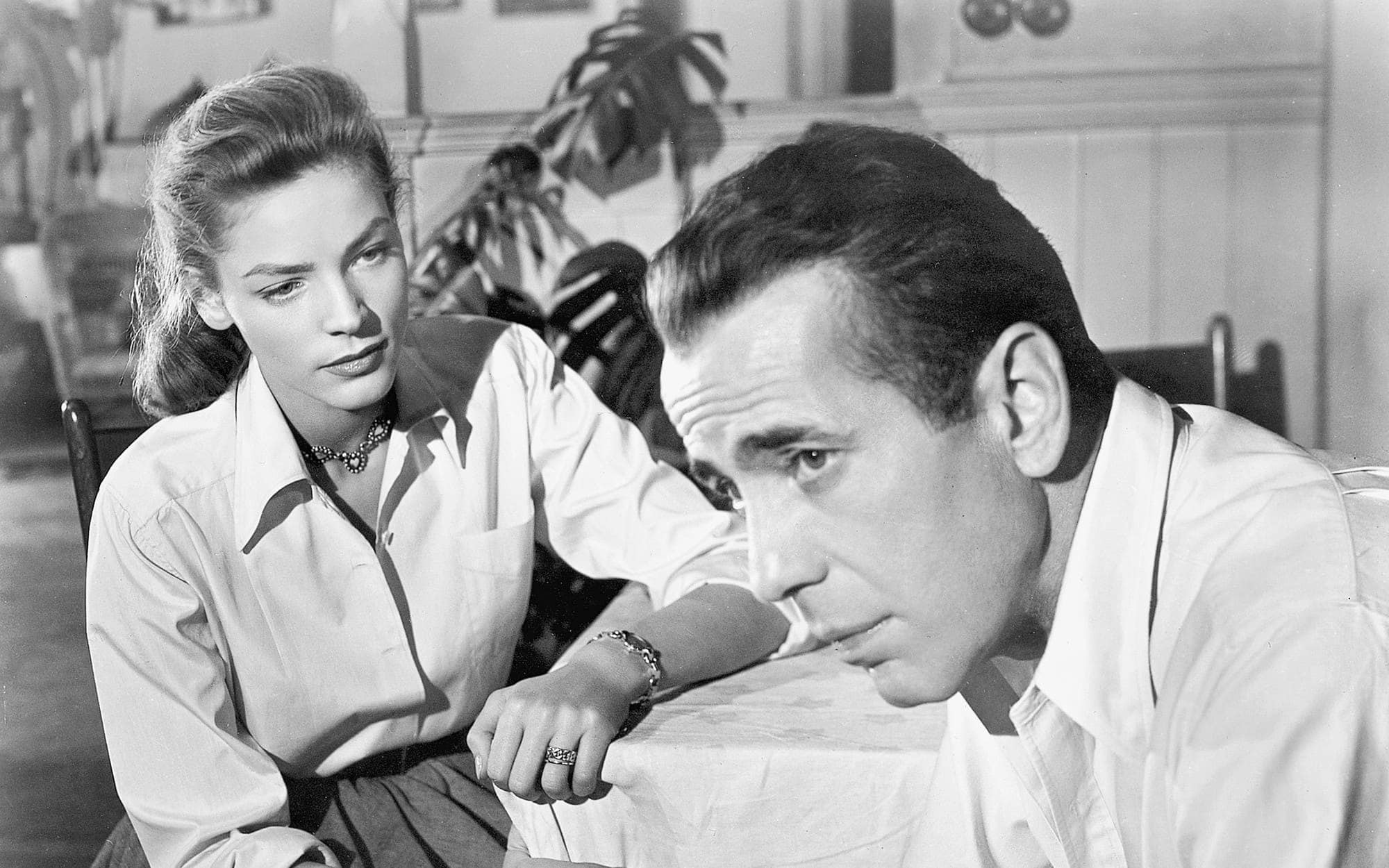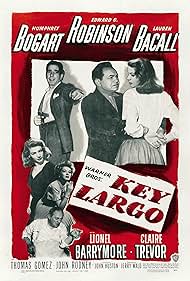If you liked Humphrey Bogart’s cynical romantic Rick in Casablanca, Key Largo gives you another go around the track with him. And if you liked the dynamite pairing of Bogart and Bacall in To Have and Have Not, The Big Sleep or Dark Passage, they get another outing too, in the last of the films they’d make together.
He plays a major back from the war and in the sweltering Florida Keys on a courtesy visit to the father of one of his men, who died in the Italian campaign. But when Major Frank McCloud gets to the hotel owned by James Temple (Lionel Barrymore), he discovers that it’s been taken over by a hoodlum, Johnny Rocco (Edward G Robinson), and his unsavoury gang.
He also discovers the dead man’s widow, Nora (Bacall), who instantly fixes moist eyes on Frank in what’s obviously an affront to the dead man’s memory (and to Nora’s character) but must be tolerated in the interests of swift storytelling.
As a hurricane closes in on the hotel and eventually lands on top of it, doughty Frank, horny Nora, grieving James, insane Johnny, plus henchmen Toots (Harry Lewis) and Curly (Thomas Gomez) and lush and desperate goodtime gal Gaye (Claire Trevor) circle around each other, waiting for one or other to make a slip, guns drawn, unable to leave on account of the weather.
It’s a gigantic standoff, in other words, and co-writer and director John Huston comes at it in two different ways. For the film’s first half it’s a film about space and suffocating geometry, angles, the way light lands, people choreographed precisely as the characters and the camera negotiate the restricted territory they are all in.
In the second – less satisfying – half Huston reverts to standard operating procedure. It’s pure Hollywood storytelling visually and dramatically. Dilemmas are worked through, good guys and bad guys getting what they deserve and so on, there’s even a gunfight finale.

There’s a political aspect to Johnny Rocco’s character. He’s a gangster (supposedly based on either/both Lucky Luciano and Al Capone) who’s been out of the country for some years but is now back home to try and bring back the bad old times, including the Prohibition era that made his fortune. Rocco is a throwback who uses 1930s lingo, see, a faintly effete character with bouffant hair, dressed in a silk dressing gown (as you do when a hurricane is bearing down on the hotel you’re in).
While his character doesn’t entirely add up (unless he has early-onset dementia), the suggestion that he’s a man out of time, figuratively lost in the late 1940s, hits home. Who’d you want, the guy who ducked the war or the guy who went to fight? The past or the future? Edward G or Bogie? Bogie has the starring credit (for the first time in the five movies they made together).
The DP is Karl Freund, one of the great cinematographic innovators – he was the first man to put a camera on a crane – and you could watch the film just for the way Freund lights Bacall’s face, soft moss spangled with glitter. It is entirely out of keeping with the drama going on elsewhere, and like I said, it’s not entirely appropriate for a widow to be this gooey so quickly, but hey, Bacall looks incredible.
Claire Trevor won the Oscar, though, for best supporting actress as Gaye, the floozy gone to seed, a drunk redeemed to some extent by the mere presence of Frank, who’s a white knight on the downlow. Lionel Barrymore, seized up with arthritis, is also impressive as the impotent but raging hotelier and grieving father.
Like I also said, it’s a first half/second half movie. It’s the first half that’s brilliant and the second half is a touch anti-climatic in comparison, in spite of the hurricane finally landing and guns being brought into play.
Key Largo – Watch it/buy it at Amazon
I am an Amazon affiliate
© Steve Morrissey 2024

